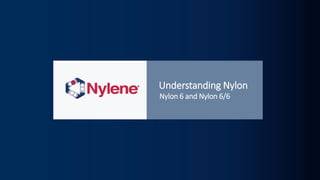Nylene is a prominent supplier of nylon 6 and nylon 6/6 polymers, offering environmentally responsible solutions for various industrial applications including packaging and automotive manufacturing. The company boasts extensive manufacturing capabilities with three facilities in North America, producing over 100,000 metric tons annually and providing custom compounding and recycling services. Key comparisons between nylon 6 and 6/6 highlight their similarities and differences in thermal stability, mechanical properties, and suitability for diverse applications.

















































